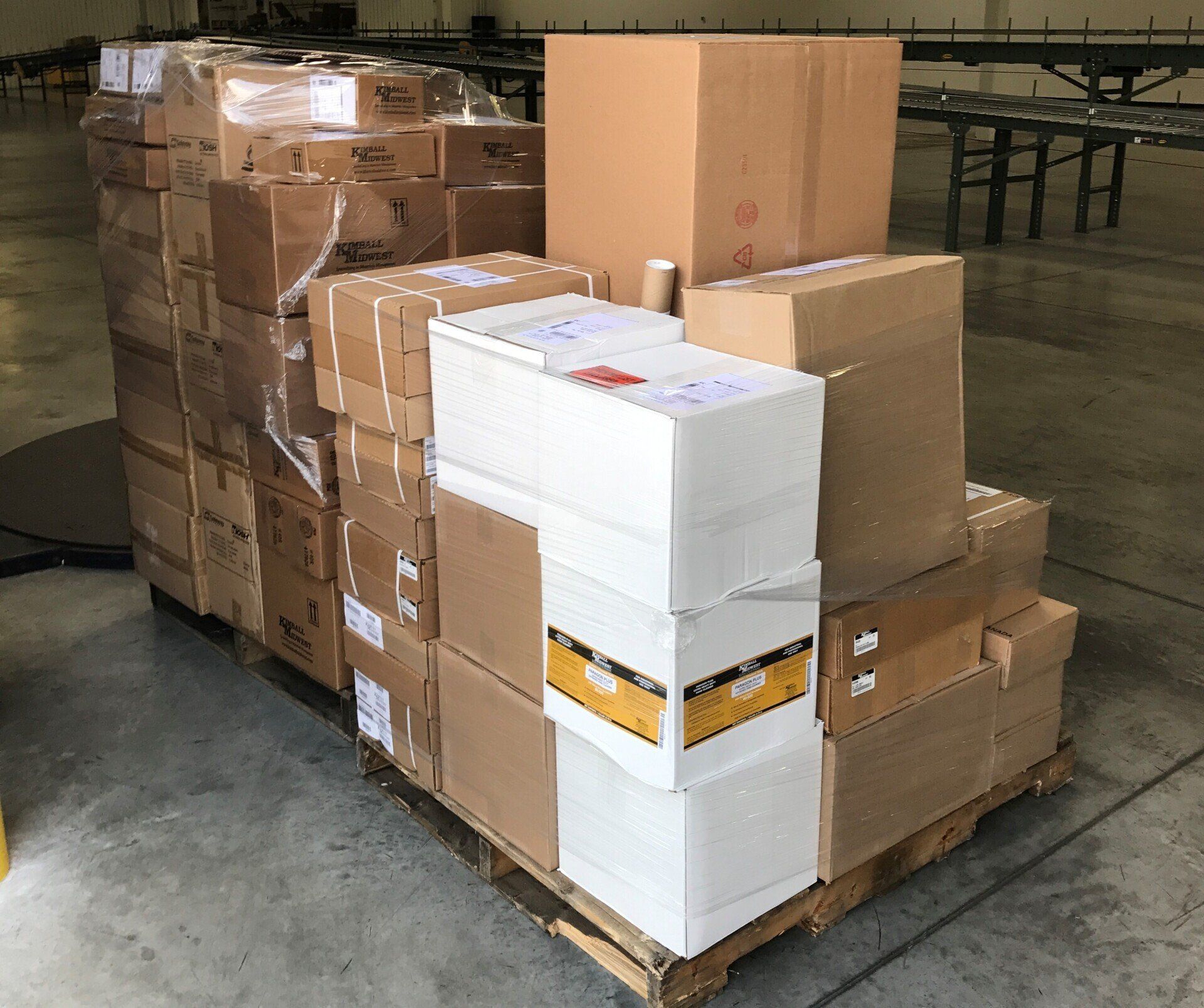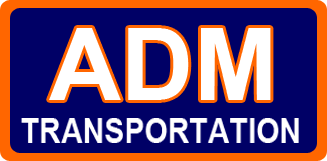Advantages of Working with a Logistics Professional to Manage LTL Shipments in Ohio
There's a lot to know when shipping less-than-a-truckload. Save time and money by putting our expertise to work for you!
Get An LTL Quote
We will get back to you as soon as possible
Please try again later
Why Hire a Logistics Professional
Expertise and Industry Knowledge: Logistics professionals have in-depth knowledge and expertise in managing LTL shipments. They understand the complexities of the transportation industry, including carrier selection, route optimization, freight classification, and shipping regulations. Their experience allows them to navigate challenges and find efficient solutions to ensure your shipments are handled smoothly.
Cost Savings: A logistics professional can help optimize your LTL shipments to minimize costs. They have access to a network of carriers and can negotiate competitive rates on your behalf. By consolidating shipments, optimizing routes, and leveraging economies of scale, they can help you achieve cost savings and improve your bottom line.
Time Efficiency: Managing LTL shipments can be time-consuming, requiring coordination with multiple carriers, tracking shipments, and handling paperwork. Outsourcing these tasks to a logistics professional frees up your time and resources, allowing you to focus on core business activities. They handle the logistics, ensuring your shipments are picked up, delivered, and tracked efficiently, saving you valuable time and effort.
Enhanced Visibility and Tracking: Logistics professionals often provide advanced tracking and visibility tools that allow you to monitor your LTL shipments in real-time. You can have access to shipment status updates, estimated delivery times, and proof of delivery. This visibility helps you stay informed and proactively address any issues that may arise during transit.
Freight Consolidation and Optimization: LTL shipments can benefit from freight consolidation services provided by logistics professionals. They can combine multiple smaller shipments from different customers into a single truckload, reducing costs and improving efficiency. By optimizing the load, they ensure that space and weight capacities are utilized effectively, maximizing efficiency and minimizing wasted resources.
Risk Mitigation: Logistics professionals have a thorough understanding of shipping regulations, documentation requirements, and insurance options. They can help you navigate these complexities and ensure compliance, reducing the risk of fines, delays, or damage to your shipments. Additionally, they can provide guidance on insurance coverage to protect your cargo during transit.
Scalability and Flexibility: Logistics professionals offer scalability to accommodate your changing shipping needs. Whether you have occasional LTL shipments or require ongoing transportation services, they can adapt their services to match your requirements. They can handle seasonal peaks, sudden increases in demand, or changes in shipping volumes, providing the flexibility needed to support your business growth.
By leveraging the expertise and resources of a logistics professional, businesses can streamline their LTL shipping operations, improve efficiency, reduce costs, and ensure reliable and timely deliveries. It's important to partner with a reputable logistics provider with a proven track record and industry experience to maximize these advantages.

LTL Shipping Rates: Factors
More About Freight Classes
LTL shipping rates are calculated in large part by the freight class, which is a uniform standard by which all carriers use to determine the weight and density of the shipment.
The density, or cube weight, helps them determine how much of something they can put on a truck and still be compliant with NMFTA weight rules. LTL carriers have many shipments on the truck at the same time, all with varying weights and cubic feet (volumes).
Example: LTL Shipment From Columbus, OH to Indianapolis, IN
Let's say you are shipping something from Columbus to Indianapolis via LTL. Once booked, the city driver will pickup the freight and take it back to their terminal in Columbus. The truck is then unloaded and your shipment is loaded onto a truck headed for Indianapolis, along with other freight going in that direction. Much like a flight, the other shipments may be delivering in Indy or may be moving along to another terminal.
The carrier will use a calculation to see what exactly can go on that Indy bound truck and typically the more dense the shipment, the more weight or space it takes, the more it will cost per mile.
Transit Time
In the above example, the shipment is picked up in Columbus, moved to the Indianapolis terminal over night and is out for delivery the next day. This is an example of a 1 day transit. To figure out transit time, you subtract out the day it was picked up and account for the freight moving toward the terminal and the day it delivers.
An example would be if you ship from Columbus to Dallas, TX. It's picked up on a Monday and will deliver on Wednesday. The transit days are Tuesday and Wednesday, a 2 day transit. Like the Indianapolis example, it is picked up, taken to the local terminal, put on another truck and moved overnight to Dallas, however, Dallas is 1000 miles away from Columbus, so it takes longer to arrive at the Dallas terminal. Then it would most likely be out for delivery on Wednesday.
You may also upgrade your shipment for a Guaranteed Transit time. If you'd like an accurate transit time for your shipment, contact us using the form below and we can help.
About Columbus, Ohio
The state capital, located in Central Ohio, Columbus is Ohio's largest city with a population of 905,748 as of the 2020 Census. Main roads include Interstates 70, 71, 270 & 670, US Routes 23, 33, 40, 62 & 42. Suburbs include: Groveport, Obetz, Gahanna, Reynoldsburg, New Albany, Pataskala, Blacklick, Grove City, Hilliard, Dublin, Worthington, Upper Arlington, Powell, Lewis Center, Plain City and nearby London and Marysville, Ohio.
NMFC New Freight Class Lookup
Use the table below as a guide. Have questions, please contact us.
| Freight Class | Example of Commodity | Weight Range Per Cubic Foot | |
|---|---|---|---|
| 50 | Nuts, Bolts, Steel Rods | More than 50lbs | |
| 55 | Hardwood Flooring, Paint, Bricks | 35-50lbs | |
| 60 | Bottled Beverages, Ceramic Tile | 30-35lbs | |
| 65 | Car Parts, Boxes of Books | 22.5-30lbs | |
| 70 | Food Items, Boxed Paper | 15-22.5lbs | |
| 77.5 | Tires, Bathroom Fixtures | 13.5-15lbs | |
| 85 | Engines Pharmaceuticals | 12-13.5lbs | |
| 92.5 | Computer Monitors, Refrigerators | 10.5-12lbs | |
| 100 | Car & Boat Covers, Canvas, Wood Crates | 9-10.5lbs | |
| 110 | Cabinets, Table Saw, Drill Press | 8-9lbs | |
| 125 | Radio, Stereo, Coffee Maker, Small Appliances | 7-8lbs | |
| 150 | Medical Instruments, Sheet-Metal Parts | 6-7lbs | |
| 175 | Stuffed Furniture, Clothing | 5-6lbs | |
| 200 | Aircraft Parts, Aluminum | 4-5lbs | |
| 250 | Bamboo Furniture, Mattress/Box Springs | 3-4lbs | |
| 300 | Wood Cabinets, Chairs, Tables, Misc Firniture | 2-3lbs | |
| 400 | Paper, Coffee Fiters | 1-2lbs | |
| 500 | Ping Pong Balls, Styrofoam | <1lb |
Get An LTL Shipping Rate
We will get back to you as soon as possible
Please try again later


